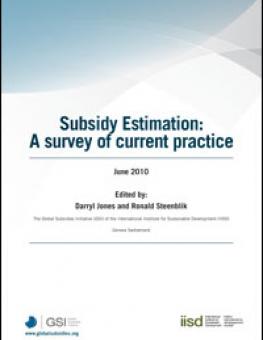
Subsidy Estimation: A survey of current practice
One of the key challenges of subsidy reform is a lack of consistent, internationally-comparable data. Information and guidance on how to measure subsidies is incomplete.
As a first step towards developing internationally-agreed upon subsidy estimation methods and best practice, the GSI has compiled a manual drawing together various methodologies used to calculate subsidy values. The manual takes as its starting point, the definition of subsidy in the WTO's Agreement on Subsidies and Countervailing Measures, and provides methodologies for each type of subsidy covered by the definition. These methodologies have been extracted from sources used and publicly reported by a range of inter-governmental organizations, countervailing authorities, other government agencies and non-governmental agencies.
Participating experts
You might also be interested in
Strategic Environmental Assessment for the Mining Sector
Strategic environmental assessments (SEA) are an essential tool for policy-makers working to develop a sector-wide vision for responsible mining.
Blackouts and Backsliding: Energy subsidies in South Africa 2023
Blackouts and Backsliding presents the latest energy subsidy data for South Africa.
Sustainable Asset Valuation of Parques del Río Norte in Medellín, Colombia
This economic valuation demonstrates the benefits of expanding urban green space in the city of Medellín, Colombia.
Progressing National SDGs Implementation
An independent assessment of the voluntary national review reports submitted to the United Nations High-level Political Forum on Sustainable Development in 2023.